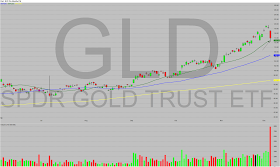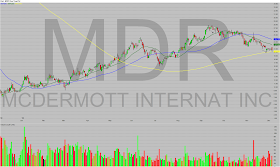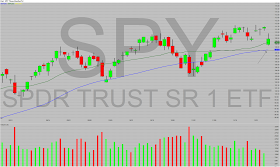Some key points before starting (again, long time readers have heard all this before but worth repeating for new members) :
1) as our long-term readers know we like to trade off our own pre-determined list (newsletter selections from previous night) and not look elsewhere during the day. This helps us focus on charts we already know well and reduces the number of mistakes we make. We don't use any scans intraday.
2) once the stock has broken-out and after you have made your exit, don't stop watching the stock. Drag it to a "triggered" portfolio and keep an eye on all stocks that have broken out. Why? a) if break-outs are working, buy the dip to EMA/pivot point and b) as a tell since watching triggered alerts gives you a very good idea whether you're in a trend day (break-outs/break-downs working) or range-bound day (multiple failures)
3) EMA's can be a valuable tool if you know how to use them -- find out which EMA is important each day. Watch 1 min, 3min, 5 min, and if you wish (we do) the 10, 15, 30 and 60 min charts and their respective 20 EMAs. We make our decisions based on the 5 min chart but we watch the 1 min to place our entry.
4) there is nothing better than a trend-day for buying pull-backs to the alert price or to the EMA (or even better a combination of the two if they line up).
5) we find EMA dip-buying works better earlier in the day than later in the day
6) for buying the pull-back always look for the ascending EMA -- flat EMAs have a much higher failure rate
7)
a) Trend days up buy breakouts, buy pull-backs to EMA
b) Trend day down short break-downs on daily, short rallies to EMA intraday.
c) Range bound days buy pull-backs to daily support, short daily resistance.
Don't get these two mixed up! Do your homework and always have alerts on your list for they serve as tells on market behavior.
8) mechanical percent based stops are useless for our type of trading -- look for the base and trade around that. The base is everything.





















